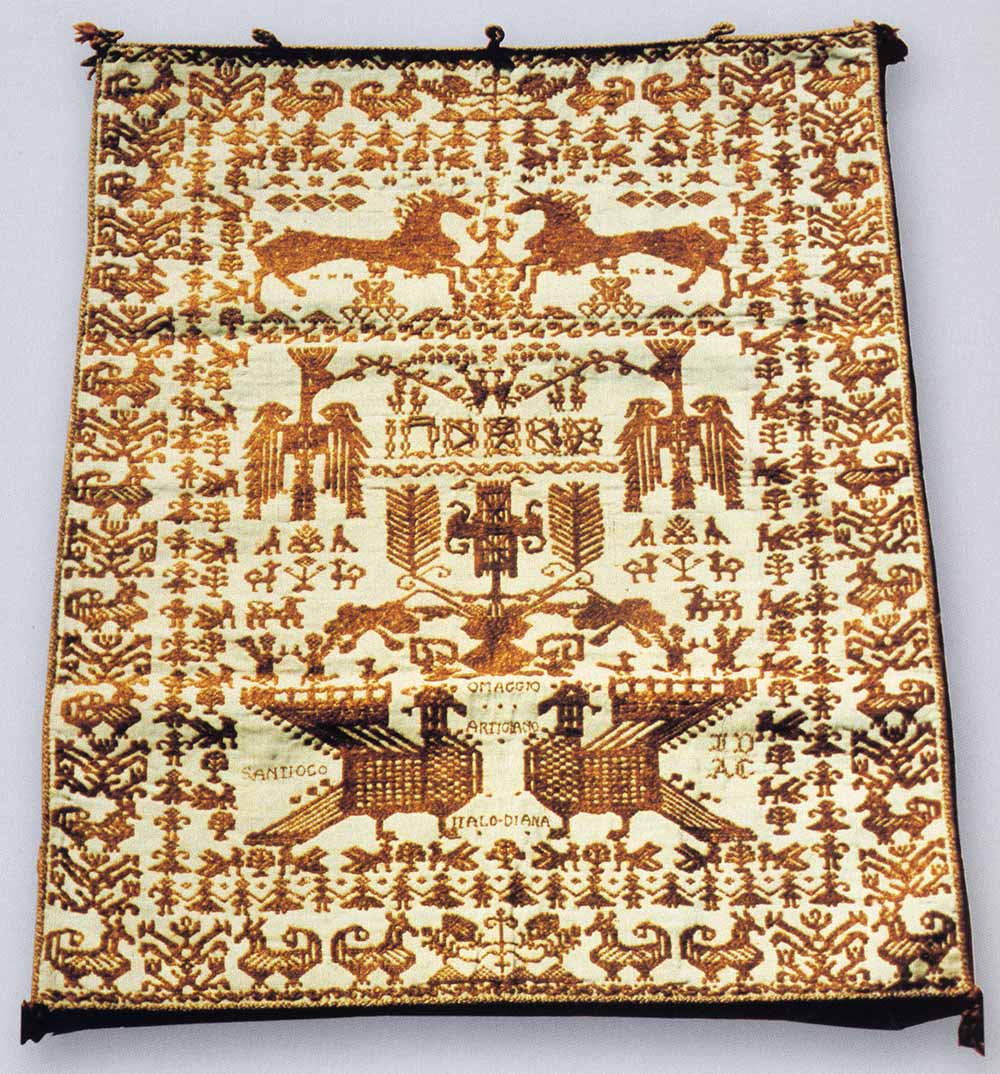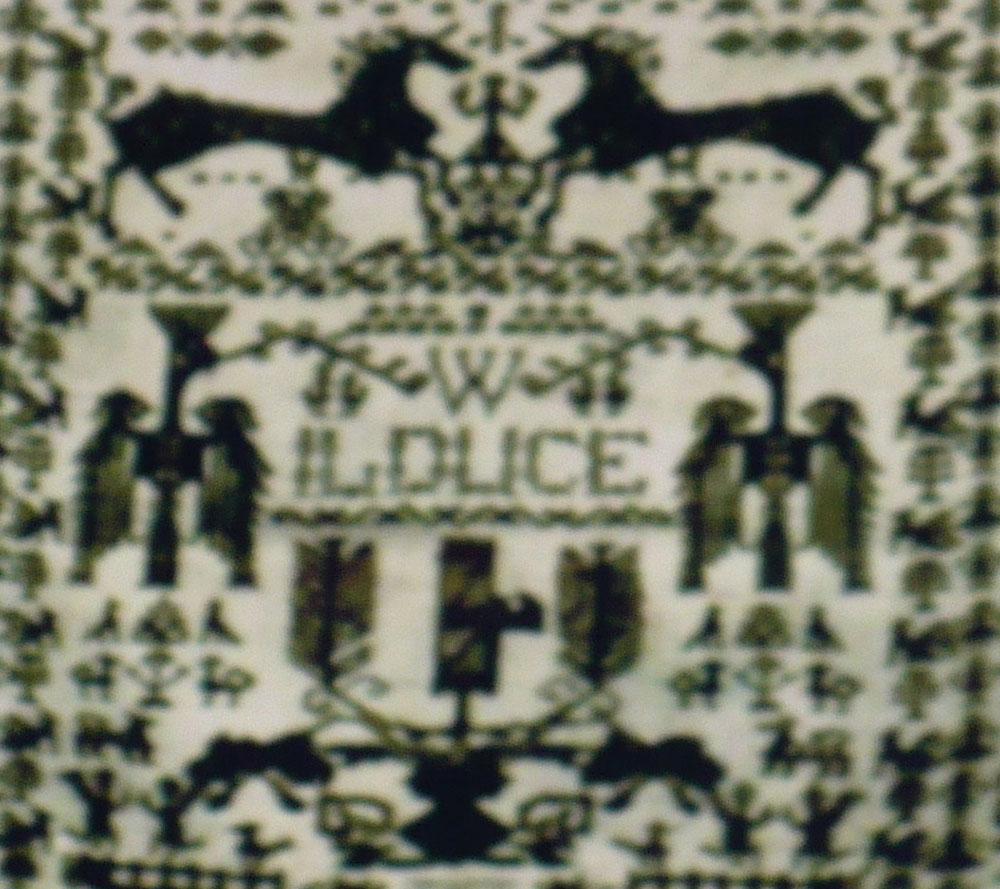Tapestry for the Duce, 20th c.
Tapestry for the Duce, 1930s, I-Sant’Antioco, Sardinia, Scuola Italo Diana. Private property (MS Inventory 24).
Sea silk, woven in mulberry silk or cotton, lined, ca 70 cm x ca 90 cm.
Italian fascism plays an important role in the recent history of sea silk. This tapestry tells a particularly curious story. On December 18th, 1938, Benito Mussolini personally inaugurated the newly founded mining town of Carbonia in the south of the island of Sardinia. For the occasion, Italo Diana’s textile atelier in Sant’Antioco created a tapestry ‘in the style of the times’. In the centre is a bundle of lictors and the lettering WW IL DUCE (Evviva il Duce). The weaver Assunta Cabras of the Diana’s atelier is mentioned with her initials AC at the bottom right, next to Italo Diana ID.
Emma Diana, one of his daughters, reports that Italo Diana and the municipality could not agree on the way in which the tapestry would be handed over to the Duce. So, the tapestry finally remained in the studio. It survived the war unscathed and sometime later it was returned to the public eye. Now it has been slightly altered by Italo Diana himself: Various indefinable ornaments entwine themselves around the – former – bundle of lictors, and the fascist homage is embroidered with politically unsuspicious patterns. Edward Posnett reports this peculiar story in his book “Strange Harvests: The Hidden Histories of Seven Natural Objects”, Random House, 2019.
This tapestry was first shown to the public in May 2019 at the exhibition Italo Diana: Ordito e Trama di un’arte antica in the Museo Archeologico Ferruccio Barreca in Sant’Antioco. More about it in the chapter Historical aspects → 20th century and → 2000-2020.


